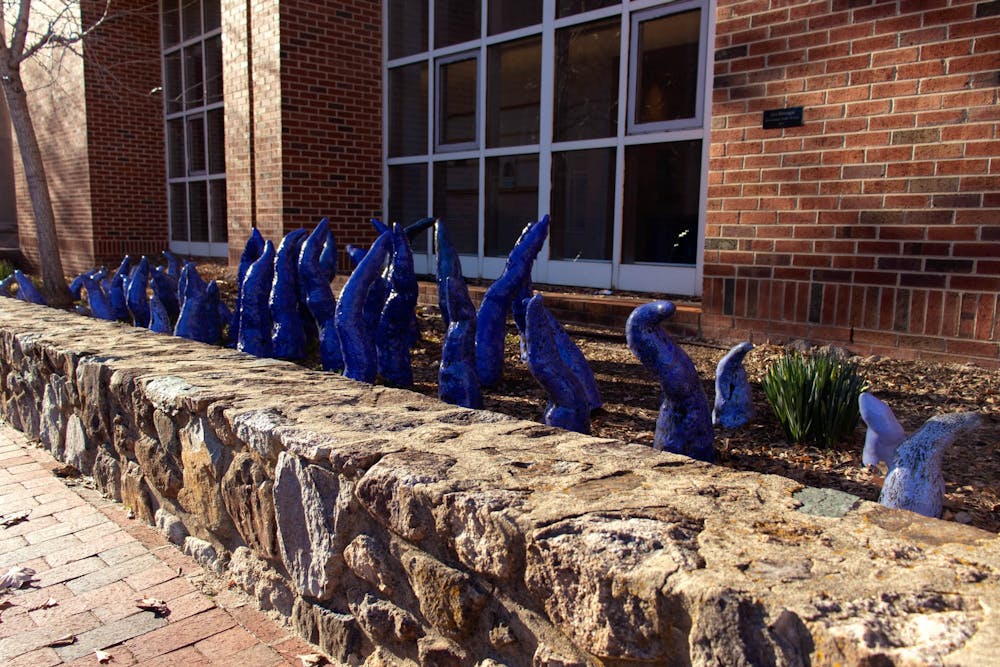Philosophy, religion and history are intertwined in Xuewu Zheng’s exhibition “One’s Religion” at the Hanes Art Center.
The exhibition, housed in the John and June Allcott Gallery, features five installations from Zheng, a former UNC visiting printmaking professor. It opened on Oct. 24 with a gallery talk and reception and will close on Nov. 30.
Zheng said he got the ideas for the installations, which use mediums like prints, acrylic and charcoal, during his meditation sessions at his studio in Poughkeepsie, N.Y.
“For me, I want to talk to people, ‘Look what I’m thinking, my way of life,' like meditation is kind of my religion,” he said.
Zheng was born in Heilongjiang, a province in China, and received his Bachelor of Fine Arts at Harbin Normal University in Harbin, China. Zheng spent 50 years in China as a professional artist until he moved to Poughkeepsie, N.Y., in 2012.
Almost every month, Zheng has solo and group exhibitions in college museums or galleries worldwide.
The drawings from one of the Hanes Art Center installations, “World,” are part of Zheng’s thesis from State University of New York at New Paltz, where he received a Master’s of Fine Arts in printmaking, as well as painting and drawing. It is a series of four charcoal drawings of detailed and abstract, organic forms.
He began the series, which consists of 17 drawings in total, during the summer of 2021 and used dark coloring from charcoal pencils to represent the effect of the COVID-19 pandemic on the world.
Kappa Kappa Gamma distinguished professor of art Beth Grabowski was a colleague of Zheng’s when he taught at UNC in 2004. She said the drawings from this installation relate to feelings of isolation.



